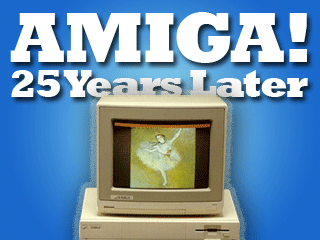Back in 1996, AT&T shook up the Internet access business by giving consumers all the data they could consume for one low price:
AT&T OFFERS CUSTOMERS ONE-YEAR FREE INTERNET TRIAL, FLAT MONTHLY RATE FOR UNLIMITED INTERNET ACCESS.
NEW YORK–(BUSINESS WIRE)–Feb. 27, 1996–AT&T today announced dial-up availability of AT&T WorldNetSM Service, with a special trial offer that gives AT&T residential customers unprecedented free access to the Internet for the next year, and a flat monthly rate of $19.95 for unlimited access by all AT&T customers.
The company began taking orders today for the service, which will be available March 14.
Under the trial offer, AT&T consumer long-distance customers who enroll in AT&T WorldNet Service in 1996 get their first five hours of Internet use a month free for a year, with no minimum subscription fee.
There are competitive rates for non-AT&T consumers as well. (See the attached AT&T WorldNet Service Price Sheet for a list of pricing plans, including access charges.)
“The company that brought everyone the phone now will bring the Internet to everyone,” said AT&T Chairman Robert E. Allen. “We believe the Internet will make communities more cohesive and businesses more competitive when it extends beyond the small percentage of people who use it today.”
AT&T will market the service to its 80 million residential customers and 10 million business customers as part of the company’s strategy to offer innovative packages of local, long-distance, wireless, online and entertainment services.
“Now every one of our consumer and business long-distance customers has an easy way to try the Internet,” said Tom Evslin, vice president of AT&T WorldNet Service. “AT&T WorldNet Service is the Internet the way you’d expect it from AT&T — safe, fun and easy to use. We’re so convinced that this is what our consumer customers have been waiting for that we’re happy to have them try it free for a year.”
AT&T business customers who find the Internet to be a critical piece of their marketing and customer service processes will appreciate AT&T’s flat monthly rate of $19.95. They will no longer have to count minutes or connection times whenever they want to check e-mail, get a stock quote or gather information from a customer’s, competitor’s, or supplier’s web site.
AT&T WorldNet Service has been available to connect businesses’ local area networks to the Internet since September. With the service announced today, customers will be able to dial into the Internet through regular phone lines easily and reliably, anywhere and anytime.
AT&T WorldNet Service includes world-class, 24-hour, toll-free hotline service staffed by experts to answer users’ questions. AT&T plans to manage the addition of subscribers and capacity to avoid overburdening the Internet, and to help ensure the reliability and quality of AT&T’s service and customer support.
The service also includes a whole new “front door to the Internet” — directories and topical areas to help people find useful information, guided tours for newcomers, navigational aids for users of all skill levels, and electronic mail. To help subscribers navigate the Internet, an AT&T-branded version of the Netscape Navigator browser software, from industry-leading Netscape Communications Corp., is available to subscribers at no extra charge.
With available software that can also be easily downloaded, parents will be able to block access to portions of the Internet they regard as unsuitable for their children.
As previously announced, AT&T WorldNet Service customers who charge the service to their AT&T Universal Card will not be held financially liable for fraudulent charges by unauthorized users if their account number is compromised while using the service to make purchases on the Internet.
“AT&T WorldNet Service can make the Internet as useful for communications as the telephone, and as indispensable for shopping as an 800 number,” Evslin said. “And our fraud protection and the available parental controls can make the Internet like a family’s local library, or the shop down the street.”
AT&T announced the availability of AT&T WorldNet Service at New York’s Brooklyn Diner to showcase the service’s friendly atmosphere and colorful “smorgasbord” of information.
The service can be accessed from home, the office or the road, and has something to offer subscribers whether they’re working or relaxing. The “AT HOME” section features sites focused on topics like leisure, education and family. The “AT WORK” portion points to business news sites, investment information and other topics of professional interest.
AT&T WorldNet Service also includes an Internet Exploration Station, a menu of theme areas such as art, music, games and gardening for family entertainment and education; a powerful search engine that allows even the most casual computer users to quickly and easily locate the information they want; and a directory that lets subscribers preview any of 80,000 World Wide Web sites before spending time to access sites.
Subscribers can dial into AT&T WorldNet Service with a personal computer and modem at speeds up to 28.8 kilobits per second, allowing them to download large stores of information, color photographs and graphics quickly.
For more information, customers may call 1-800-WORLDNET, or visit AT&T WorldNet Service’s home page at http://www.att.com/worldnet. -0-
 Since the dawn of computers, games have been an entertaining way to demonstrate a system’s capabilities. Manufacturers like DEC distributed them as early as the 1960s: They were as powerful sales tools with universal appeal. The tradition continued with some of the earliest PCs. Simple (but often addictive) games are bundled with operating systems to this day.
Since the dawn of computers, games have been an entertaining way to demonstrate a system’s capabilities. Manufacturers like DEC distributed them as early as the 1960s: They were as powerful sales tools with universal appeal. The tradition continued with some of the earliest PCs. Simple (but often addictive) games are bundled with operating systems to this day.

 People–especially people who are online–like reading funny factoids that show the dizzying rate of technological progress over the years. So I wasn’t completely shocked that a
People–especially people who are online–like reading funny factoids that show the dizzying rate of technological progress over the years. So I wasn’t completely shocked that a 
 Twenty-five years ago today, a new personal computer was unveiled at a
Twenty-five years ago today, a new personal computer was unveiled at a  Microsoft PR honcho Frank Shaw has a
Microsoft PR honcho Frank Shaw has a  For no particular reason other than that it’s Friday, let’s take a guided tour of the evolution of TV in America from the late 1930s through the early 1970s–as shown in commercials and promotional films from RCA, which was once practically synonymous with consumer electronics in this country. You may take moving images, color screens, remote controls, and displays small enough to tote around for granted, but they were all startling breakthroughs in their day.
For no particular reason other than that it’s Friday, let’s take a guided tour of the evolution of TV in America from the late 1930s through the early 1970s–as shown in commercials and promotional films from RCA, which was once practically synonymous with consumer electronics in this country. You may take moving images, color screens, remote controls, and displays small enough to tote around for granted, but they were all startling breakthroughs in their day.


